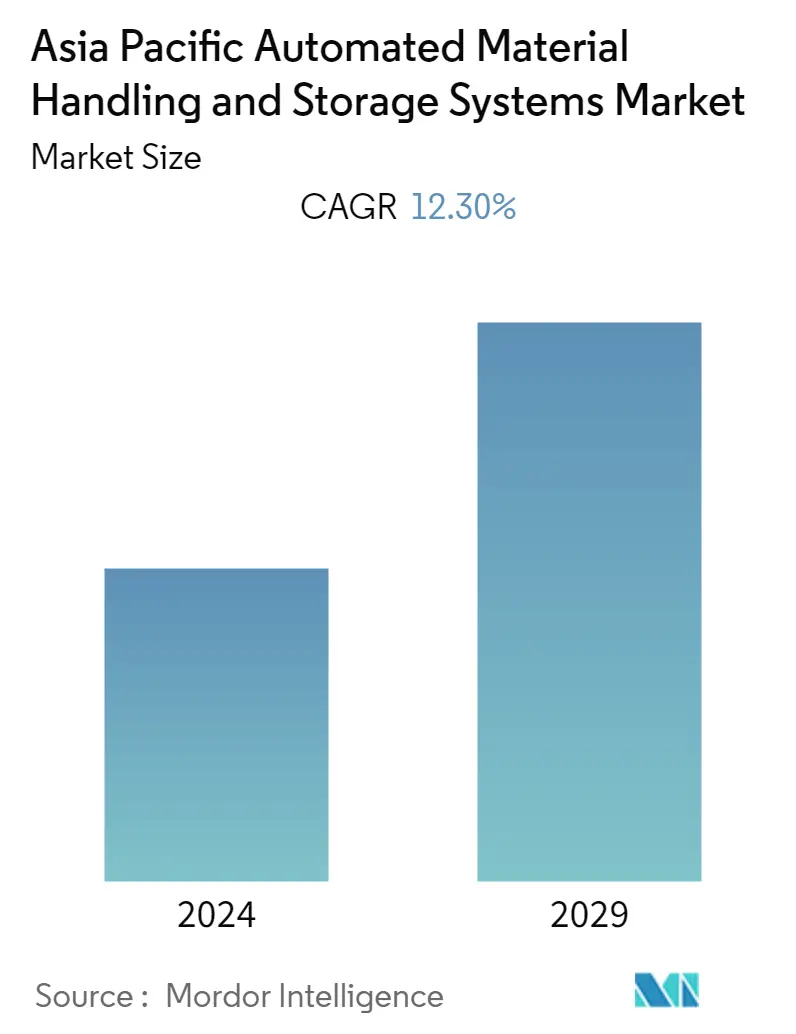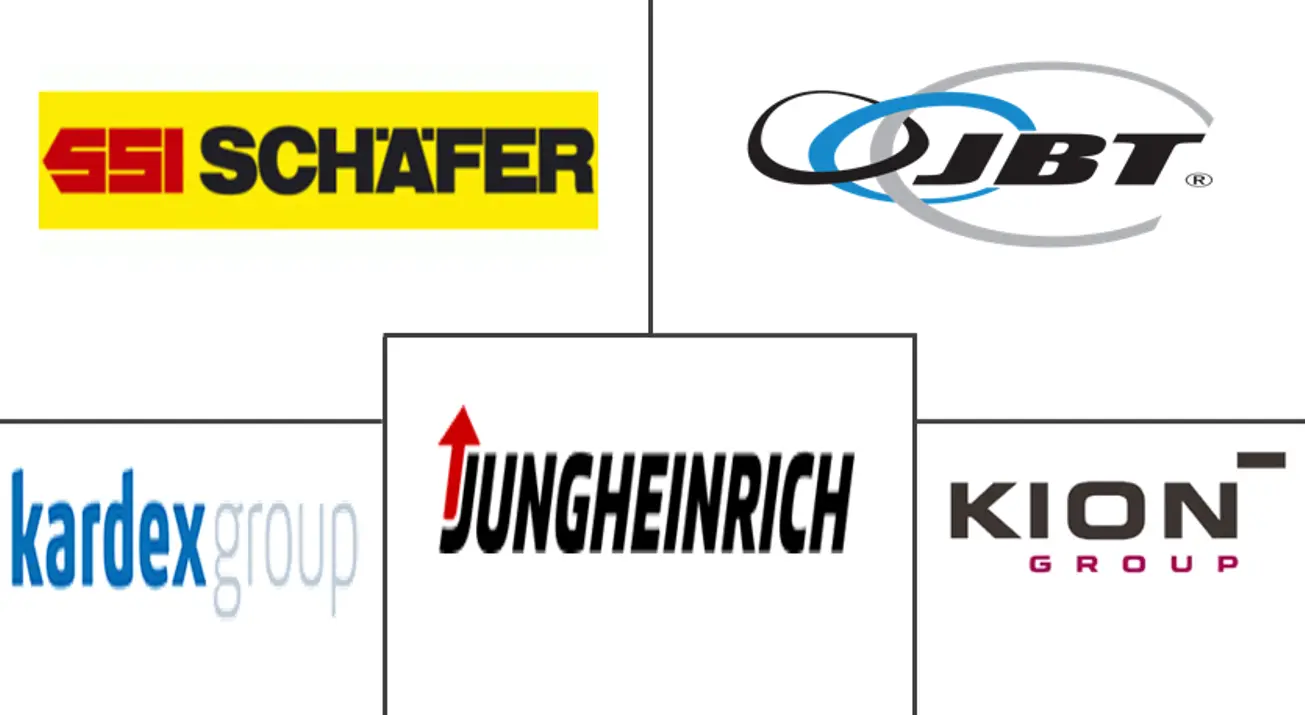Market Size of Asia Pacific Automated Material Handling and Storage Systems Industry

| Study Period | 2019 - 2029 |
| Base Year For Estimation | 2023 |
| Forecast Data Period | 2024 - 2029 |
| Historical Data Period | 2019 - 2022 |
| CAGR | 12.30 % |
| Market Concentration | Low |
Major Players
*Disclaimer: Major Players sorted in no particular order |
Need a report that reflects how COVID-19 has impacted this market and its growth?
APAC Automated Material Handling & Storage Systems Market Analysis
The Asia-Pacific Automated Material Handling (AMH) and Storage Systems Market (henceforth, referred to as the market studied) is expected to grow with a CAGR of 12.3%, during the period 2022-2027. With the rapid growth in stock-keeping units (SKUs), wholesalers and distributors are finding it difficult to make informed decisions about operations. This factor is driving the overall need for smarter usage of labor, equipment, and technology. The major factors driving the need for automated material-handling systems are cost savings, labor efficiency, and space constraints.
- In the current market landscape, there is an increase in available products and demand for more frequent and smaller deliveries. The automated distribution operations can immediately increase an organization's order accuracy, from half a percent to several percentage points. The primary driving forces for the growth of the Asia-Pacific regional segment are the rising urbanization, rising e-commerce sales, and the significant presence of technology providers. These players are investing in research and development activities to offer innovative solutions to stay in the competitive market.
- Asia-Pacific emerged as one of the world's largest e-commerce hubs. The region witnessed a rapid growth in retail e-commerce, owing to the rising middle-class population in China, India, and Indonesia, along with the popularity of mobile gadgets. China alone accounts for 40% of the world's retail e-commerce sales. In some Asia-Pacific countries, the land for warehousing is becoming increasingly limited. In these areas, the trend of warehouses is expected to go up, with both multi-story facilities and taller, narrower aisles. These trends are expected to drive the demand for material handling systems.
- Over the last 70 years, the overall material handling has undergone various transformations that have changed the industry's outlook. Material handling machines and robots replaced individual workers. Due to this vast transformation, many enterprises have grown, especially the automotive industry, which has experienced a 10-fold growth. Developing countries in Asia, such as India, are investing in material handling equipment significantly. According to the Wisconsin Economic Development Corporation, the Indian market for materials handling equipment (MHE), accounting for about 13% of the market share of the country's construction equipment industry, witnessed significant growth in the recent past.
- The markets in the Southeast Asian countries are also witnessing an increasing number of manufacturing businesses establishing new facilities in Thailand, the Philippines, and Vietnam. This also increased the employment opportunities within the region, thereby boosting the average disposable income, which, in turn, is helping to drive the demand for local warehouses, as people are aware of the international brands. Indonesia is also categorized as a nation adopting automation rapidly. The country recorded an increased robotic usage for industrial work. Moreover, since Japan is both its supplier and consumer, Indonesia is expected to benefit from the trade with Japan, boosting the demand for automation in the region.
- The COVID-19 outbreak and lockdown restrictions across the globe have affected industrial activities across the world. Some of the effects of lockdown include supply chain disruptions, lack of availability of raw materials used in the manufacturing process, labor shortages, fluctuating prices that could cause the production of the final product to inflate and go beyond budget, shipping problems etc.
